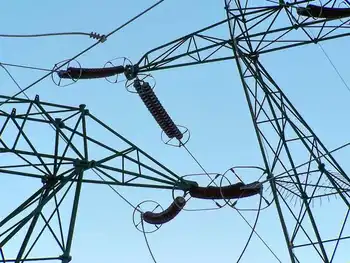Ontarians cut little power during crisis
TORONTO -- - Average Ontarians barely responded to Premier Ernie Eves' pleas for electricity conservation during the April 14 blackout emergency, according to figures showing major commercial and industrial users did the most to cut consumption and avoid rolling blackouts.
"It looks like residential customers were freeloading on the others," Tom Adams, the executive director of the watchdog group Energy Probe, said after reviewing data assembled by CanWest News.
"It may be that the premier's polling results have been buoyed upward by a sense that during a crisis he was able to lead the people, but as we discover now, the people were not moved."
Data from the Independent Market Operator, which oversees Ontario's electricity market, show that power use in Ontario was 4,000 to 4,500 megawatts less than usual during last week's crisis.
Mr. Eves repeatedly lavished praise on Ontarians for their contribution, noting at one point that the effort illustrated "what a difference individuals can make in terms of energy conservation."
Also yesterday, Mr. Eves announced a compensation package of $50 million to $75 million that will be released to municipalities to cover extra costs of essential services like police, fire and hospitals.
And Mr. Eves said he expects the federal government to kick in with a disaster assistance plan.
The package is to be similar to one instituted after the 1998 ice storm, when the federal government transferred $124 million in disaster relief funding to Ontario and delivered a further $500 million in assistance to Quebec.
In a letter to Mr. Chrétien, Mr. Eves said that the federal government should follow the province's example.
"The federal government has an established track record of assisting Canadians in times of emergency," he wrote. "I am urgently calling upon you and the government of Canada to provide the assistance Ontarians need and deserve to cover the extraordinary costs of recovering from the blackout," he wrote.
The compensation funding announcement was welcomed by municipal leaders.
Toronto Mayor Mel Lastman said that his city should receive 100 per cent of its extraordinary costs.
"Anything less shortchanges our taxpayers," he said.
The province has not specified what percentage of their costs municipalities can claim.
The early indications are that commercial and industrial companies were most responsible for ensuring the lights stayed on while efforts were under way to revive the province's generating plants.
Reductions in power use by major commercial buildings in Toronto, combined with the 50 per cent cut in electricity consumption by the 60 giant industrial members of the Association of Major Power Consumers in Ontario accounted for savings of 2,900 megawatts alone, according to figures from Toronto Hydro and AMPCO.
"Those groups definitely represent less than 25 per cent of the electricity market but we now know they are responsible for nearly 75 per cent of the savings," noted Mr. Adams.
"The bottom line is that industry and commercial customers were very responsive and I think that can be put down to two factors -- they are not on the rate freeze and I understand the provincial government was putting the heat on them individually. There were conference calls and what not."We've got an overblown image of ourselves. The truth is that ordinary residential customers in the main did not listen to the premier."
Toronto Hydro vice-president Blair Peberty said each of the giant office towers in downtown Toronto require between 10,000 and 30,000 kilowatts to keep the lights on, elevators running and air temperature regulated.
"I would guess up to 90 per cent of the 1,000 megawatt hours of savings at the peak on the hot Thursday came from commercial efforts," Mr. Peberty said, noting that commercial operations account for only 80 per cent of electricity consumption in the city.
"I suspect they did more (than residential users) because they had more options open to them, they had more things they could cut back on," he said, noting that the building operators often reduced the number of elevators in operation, turned up the air temperature and turned off lights.
AMPCO president Mary Ellen Richardson said her membership, which includes Ford, Inco, Dofasco and Abitibi Consolidated, accounts for 15 per cent of power consumption in the province. The companies, she added, clearly understood that responding to Mr. Eves's request for a 50 per cent cut in power consumption was essential to the recovery of Ontario's electricity system and they therefore cut their electricity use by 2,000 megawatts.
Noting that the government relied on moral suasion to secure co-operation, Ms. Richardson added that "they have more ability to use that kind of moral suasion on large consumers and it is easier to track their performance relative to (tracking) Mr. and Mrs. Jones.
"You need to engage them (the average person) and the most effective way to engage them is through the pocketbook," she said, noting that the 4.3-cent electricity price freeze introduced by Mr. Eves for residential customers does not reflect the real price of the resource.
Ontario's reputation took another knock recently in U.S. media reports that suggest the province was a contributor to the worst blackout in North American history.
The New York Times reported that Gov. George Pataki, faced with persistent criticism over his energy policies, defended his deregulation of the energy industry in New York and said the recent blackout occurred because safeguards had failed on the Canadian side of the border.
New York State electricity officials joined the fray, telling the Dow Jones Newswire that the blackout was caused by a massive surge of electricity from Ontario.
Mr. Eves told reporters that Mr. Pataki "said no such thing" to him when he met with the governor in Albany earlier this week.
"At no time did he indicate any problem with anything that the province of Ontario was doing," the premier told reporters.
Related News

Electrification Of Vehicles Prompts BC Hydro's First Call For Power In 15 Years
VANCOUVER - The Government of British Columbia (the Government or Province) has announced that BC Hydro would be moving forward with a call for new sources of 100 percent clean, renewable emission-free electricity, notably including wind and solar. The call, expected to launch in spring 2024, is BC Hydro's first call for power in 15 years and will seek power from larger scale projects.
Over the past decade, British Columbia has experienced a growing economy and population as well as a move by the housing, business and transportation sectors towards electrification. As the Government highlighted in their recent announcement, the…




